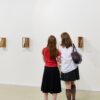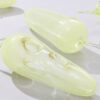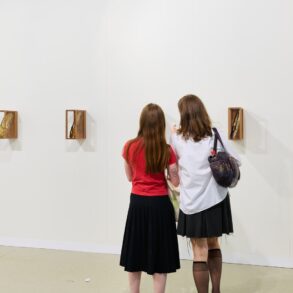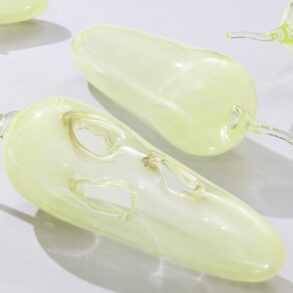For all of her boldness as the only American to be a member of the French Impressionists, Mary Cassatt is often typecast as a painter of (dull) domestic scenes. Her mostly male colleagues—now being celebrated in exhibitions marking 150 years since the first Impressionist exhibition—used free brushwork to paint scenes of modern life in vivid color, often en plein air (outside). Cassatt, on the other hand, mostly stayed in.
“Perpetual afternoon tea” is what a 1954 review in Art News by Edgar P. Richardson claimed Cassatt painted. “Tea, clothes, and nursery; nursery, clothes, and tea.”
Photos of Cassatt reinforce the idea that she was a woman steeped in comfortable bourgeois life. No photographs exist of her studio or of her at work; instead, she’s seen sitting in a garden, reading a newspaper, wearing a nice hat. In other words, in the images we have left of her she looks like the women she portrayed in around 320 paintings, 380 pastels, and 215 prints over the course of her 50-year career.
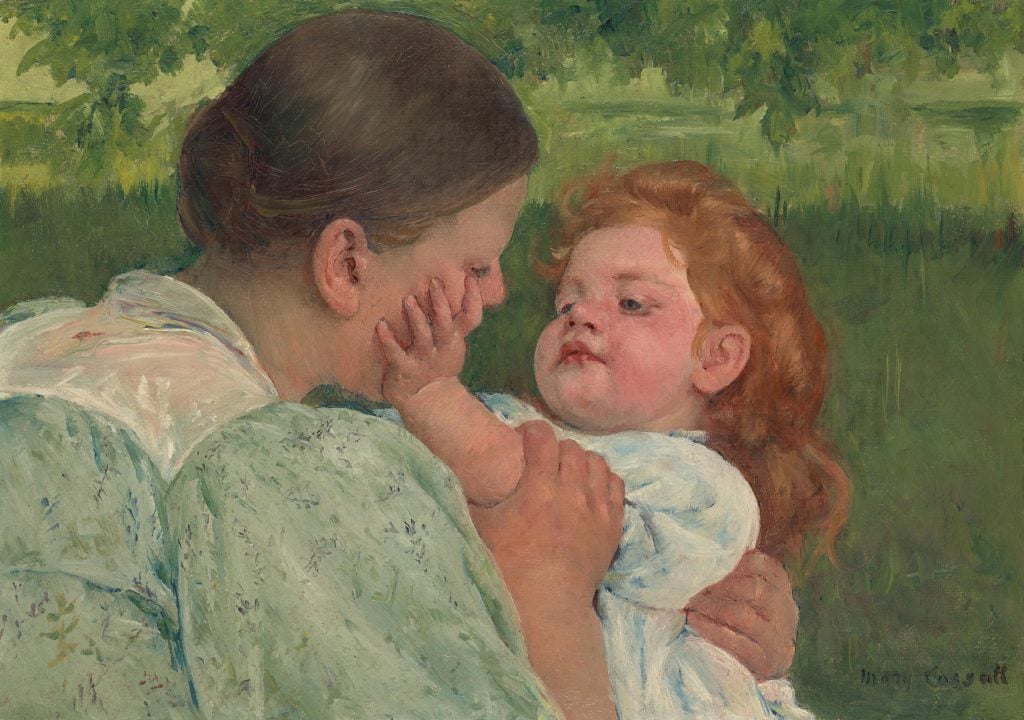
Mary Cassatt, Maternal Caress (1896). Courtesy Philadelphia Museum of Art.
“Mary Cassatt at Work,” an exhibition of over 130 artworks and personal correspondence on view now at the Philadelphia Museum of Art (the PMA has 84 works by the artist, one of the largest institutional collections of the artist in the United States), flips this tea party narrative on its saucer. If Cassatt painted women caring for children or tending to domestic duties, we could choose to read these images as documenting the sort of women’s work that is often deemed effortless or invisible. Home maintenance and paid or unpaid childcare populate her work. Cassatt’s labor is itself a subject of the exhibition, after the museum embarked on two years of in-depth technical study of her works.
This is first large exhibition of the artist in the United States in over 25 years, and around three times more extensive than the last (a 1998–99 exhibition that traveled to the National Gallery of Art in Washington, D.C., the Art Institute of Chicago, and the Museum of Fine Arts, Boston). It will also show at the Fine Arts Museums of San Francisco’s Legion of Honor after it closes at the Philadelphia Museum of Art in September.
While Cassatt’s work has been shown in group exhibitions and shows of women Impressionists (which exhibition co-curator Jennifer Thompson claims Cassatt would have hated), she hasn’t seen the same kind of focused attention as her peers. “We’re at a moment with her male colleagues where we do very focused shows. We have Cézanne rocks-and-quarry paintings, and we have Renoir nude paintings,” Thompson says. “But for the female Impressionists we haven’t gotten beyond the big monographic shows.”
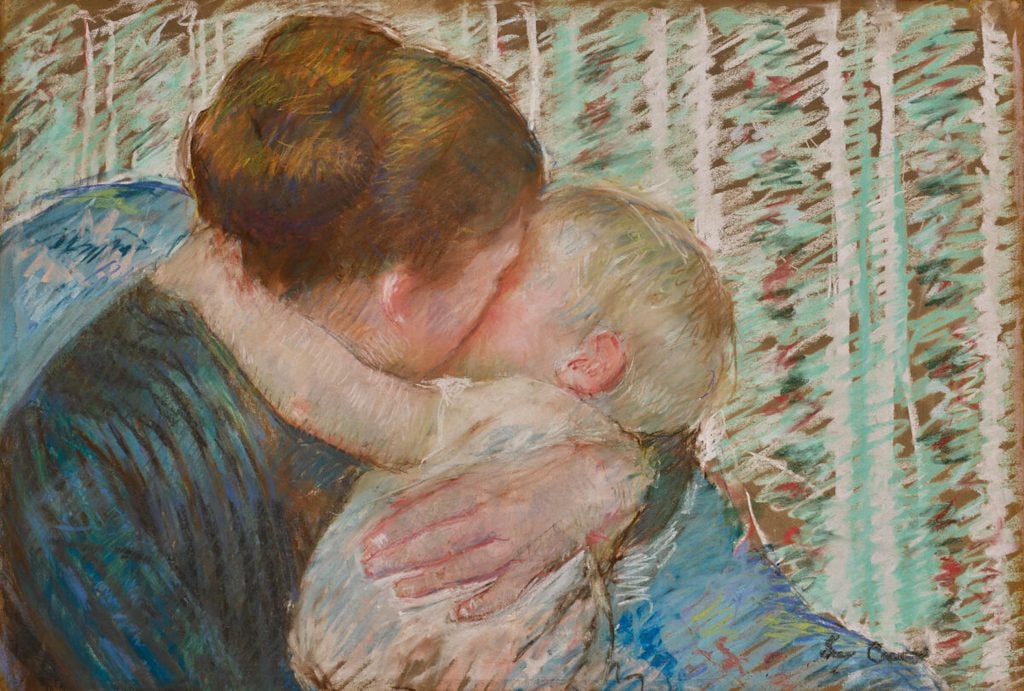
Mary Cassatt, A Goodnight Hug (1880). Courtesy Philadelphia Museum of Art.
Thompson and her co-curator, Laurel Garber, wanted to dig deeper and present something new about Cassatt, noticing that while scholars had begun closer examinations of individual Cassatt works, one gap was technical study. There are a few reasons why women are less often studied this way. For one thing, their works are more likely to be in private hands than institutional collections where they could be studied more easily. (Case in point: some 16 private collectors are loaning their works to this Cassatt show.) And when works are held by museums, because they might have just one or two examples by a well-known female artist, they are always on view and therefore never taken from the gallery wall to the conservation lab.
“Documentation of Cassatt’s process is lacking in comparison to that of her contemporaries,” writes conservator Teresa A. Lignelli in the exhibition catalogue. “There are no studio photographs of Cassatt at work, no receipts for art supplies, and—despite an abundance of letters—scant reference to her practice in known correspondence. Instead, the paintings themselves are telling.”
Cassatt’s paintings were studied using raking light, ultraviolet visible fluorescence, infrared reflectography, and X-radiography, and the results of this research are visible at several points in the exhibition. For the painting A Woman and a Girl Driving (1881), for example, an infrared image shows how Cassatt reworked the composition of her sister driving a carriage led by Bichette, the family pony. Cassatt played with the position of the carriage wheel spokes, groom, and trees in the background, ultimately landing on a composition that emphasized movement.
The team at the PMA also x-rayed some of their pastels. “We’re not sure if anyone else has ever done that,” Thompson says. “That was helpful in understanding that, not surprisingly, she was making a great number of changes in works from the ’70s and early ’80s, but then she develops a very confident line in her later pastels and is leaving very visible signs of her work.” In a ca. 1879 pastel titled At the Theater (Au théâtre), an x-ray image that is part of the exhibition reveals that Cassatt adjusted the size and angle of the fan held by the woman in the theater box, varying how much of the theater’s balconies were visible.
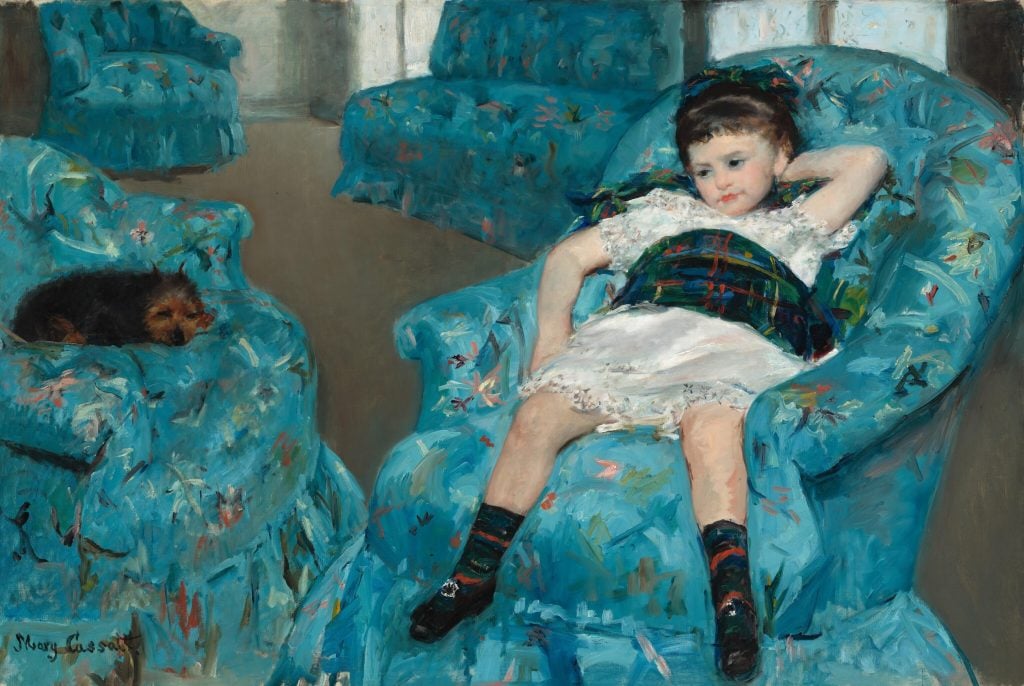
Mary Cassatt, Little Girl in a Blue Armchair (1877-78). Courtesy National Gallery of Art, Washington, D.C.
Otherwise, by studying Cassatt’s works closely, conservators were able to tease out certain routines. She generally worked on top of a first draft, scraped and reworked her pieces, used materials with a confident spontaneity, and worked fast. Though Cassatt came from a self-made and well-to-do family, it was always clear to her that her painting career would have to pay for itself—and she worked in haste.
This meant that sometimes she had to transport paintings that hadn’t had time to fully dry, using pins to create a distance between stacked canvases; these pinholes and marks are still visible at the corners and edges of some of her paintings. And for Maternal Caress (1896) in the PMA collection, correspondence reveals that the artist completed the canvas on July 11, 1896 and that within four days it was both delivered to her dealer Paul Durand-Ruel and sold. It wasn’t completely dry when Durand-Ruel framed it, so paint transferred from the canvas to the frame’s rabbet edge (which also confirms that the current frame is original).
“With the paintings, we’re still at very early days in terms of understanding how she was working,” says Thompson of the research that led to the exhibition. “We’re hoping that this project will inspire museums and collectors to start to look closely at their Cassatt paintings.”
“Mary Cassatt at Work” is on view at the Philadelphia Museum of Art, May 18-September 8, 2024, and at the Fine Arts Museums of San Francisco, Legion of Honor, October 25, 2024-January 26, 2025.
Follow Artnet News on Facebook:
Want to stay ahead of the art world? Subscribe to our newsletter to get the breaking news, eye-opening interviews, and incisive critical takes that drive the conversation forward.
This post was originally published on this site be sure to check out more of their content

